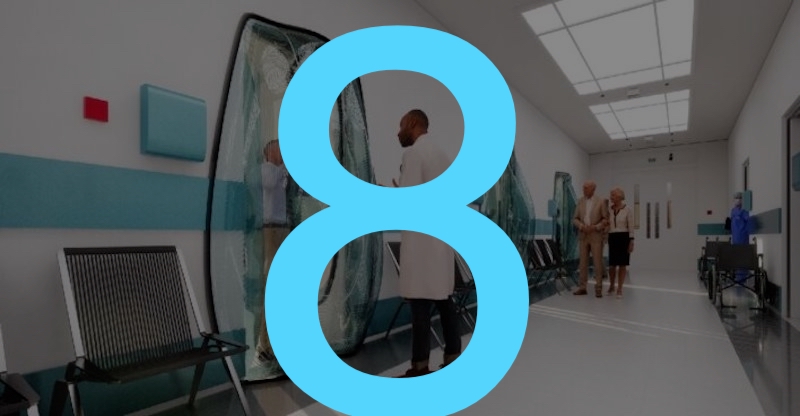1. WATG designs solution for isolating without sacrificing social connectivity (BD+C)
"But in an effort to make the transition to isolation easier, without the need to sacrifice human interaction, WATG has created Oriel, a new option that allows any room to become a self-isolation zone while maintaining a social component."
2. State lawmakers encouraging transition to heat pumps for building heating (BD+C)
"Lawmakers and regulators in an increasing number of states, including California and New York, are changing policies to promote the use of electricity instead of fossil fuels to power building heating and hot water systems."
3. National survey reveals pandemic's impact on college students' mental health, remote learning, families' income and more (Core Spaces)
"Of 2,500 student respondents, 75% feel more anxious or stressed, 57% said they lost their summer jobs and 90% want to return to campus in the fall."
4. A look back at design standard shifts: ADA vs. COVID-19 (Burns & McDonnel)
"If the ADA is any guidance, it may be years before nationwide standards are published and adopted."
5. Clothing stores, not bars and restaurants, took the biggest sales hit from the Coronavirus (MarketWatch)
“It turns out that bars and restaurants did not take the biggest hit from the coronavirus pandemic — it was clothing stores that suffered the biggest revenue losses over the past three months, with sales slashed by 66.6%. By contrast, sales at restaurants and bars were down “only” 40%."
6. Hotels see leisure travel return, but it's still going to be a tough year (Bisnow)
"Leisure travelers are slowly returning to the hotel market even though the lodging industry as a whole faces ongoing financial strain from the coronavirus pandemic and a longer road to full recovery, industry experts say."
7. Will contactless technology be a priority for post-COVID-19 workplace? (Mortgage Professional America)
"The workplace is being reimagined to include more square footage per person, plexiglass dividers, and hybrid work from home and office structures and schedules, in order to conform to new health and safety regulations. But what role will technology play, as companies look to reduce contamination on high touch surfaces?”
8. Once booming San Francisco apartment market goes in reverse (WSJ)
“Rents in San Francisco, the most expensive apartment market in the U.S., are tumbling as the city’s vaunted tech sector sheds jobs and more tenants leave the city.”

Related Stories
High-rise Construction | Jan 23, 2017
Growth spurt: A record-breaking 128 buildings of 200 meters or taller were completed in 2016
This marks the third consecutive record-breaking year for building completions over 200 meters.
Market Data | Jan 18, 2017
Fraud and risk incidents on the rise for construction, engineering, and infrastructure businesses
Seven of the 10 executives in the sector surveyed in the report said their company fell victim to fraud in the past year.
Market Data | Jan 18, 2017
Architecture Billings Index ends year on positive note
Architecture firms close 2016 with the strongest performance of the year.
Market Data | Jan 12, 2017
73% of construction firms plan to expand their payrolls in 2017
However, many firms remain worried about the availability of qualified workers.
Market Data | Jan 9, 2017
Trump market impact prompts surge in optimism for U.S. engineering firm leaders
The boost in firm leader optimism extends across almost the entire engineering marketplace.
Market Data | Jan 5, 2017
Nonresidential spending thrives in strong November spending report
Many construction firms have reported that they remain busy but have become concerned that work could dry up in certain markets in 2017 or 2018, says Anirban Basu, ABC Chief Economist.
Market Data | Dec 21, 2016
Architecture Billings Index up slightly in November
New design contracts also return to positive levels, signifying future growth in construction activity.
Market Data | Dec 21, 2016
Will housing adjust to an aging population?
New Joint Center report projects 66% increase in senior heads of households by 2035.
Market Data | Dec 13, 2016
ABC predicts modest growth for 2017 nonresidential construction sector; warns of vulnerability for contractor
“The U.S. economy continues to expand amid a weak global economy and, despite risks to the construction industry, nonresidential spending should expand 3.5 percent in 2017,” says ABC Chief Economist Anirban Basu.
Market Data | Dec 2, 2016
Nonresidential construction spending gains momentum
Nonresidential spending is now 2.6 percent higher than at the same time one year ago.
















